#educational content
Text

79 notes
·
View notes
Text
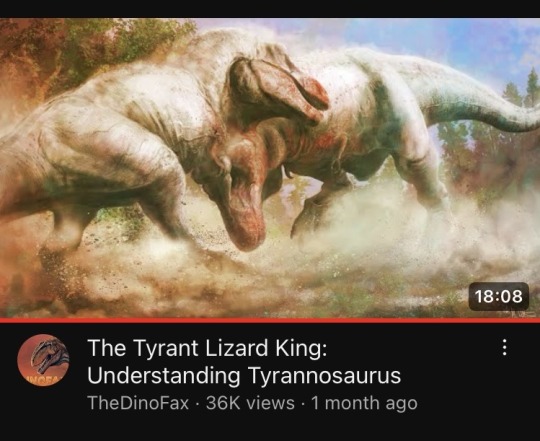
youtube
#dinofax#tyrannosaurus rex#trex#t rex#dinosaur#dinosaurs#science#science tumblr#science side of tumblr#paleontology#paleoblr#animal video#animal#prehistoric#animals#educational#educational videos#educational content#video essay#wildlife#wild animals#tumblr recommendations#recommend#recommendation#youtube recommendations#video recommendation#youtube#youtube content#youtube link#video link
16 notes
·
View notes
Text
Some Helpful Illustrated Botanical PDFs and websites I've Found
ILLUSTRATED GLOSSARY OF BOTANICAL TERMS FLORA OF THE CHICAGO REGION A Floristic and Ecological Synthesis - this PDF has the botanical terms of things like leaf shapes and stem placements that are clearly illustrated. So if you've been struggling like me to figure things out about botany terms, here's a good start.
Leaf Key to common trees in Louisiana - even if you don't live in Louisiana this PDF is good to look at just to see the illustrations on leaf types, and what trees they've sorted by each type. You can study the examples that fall under the terms to familiarize yourself a bit more with what those terms mean!
Weeds of Arkansas by the University of Arkansas Division of Agriculture - This PDF has pictures of the different types of plants you'll find and they describe them with botanical terms alongside the photos. So again it's worth it just to kinda skim through and see what terms you recognize and how those terms present in the illustrations.
Terrestrial Field Guide, Noxious Weeds of Florida - a really good PDF with explanations of growth forms, leaves, flowers, and so on, as well as having loads of pictures.
Friends of the Louisiana State Arboretum - this one is more just for fun, but has pictures of different tree leaves next to their tree type. Clicking takes you to a page with more information about that specific tree.
74 notes
·
View notes
Text

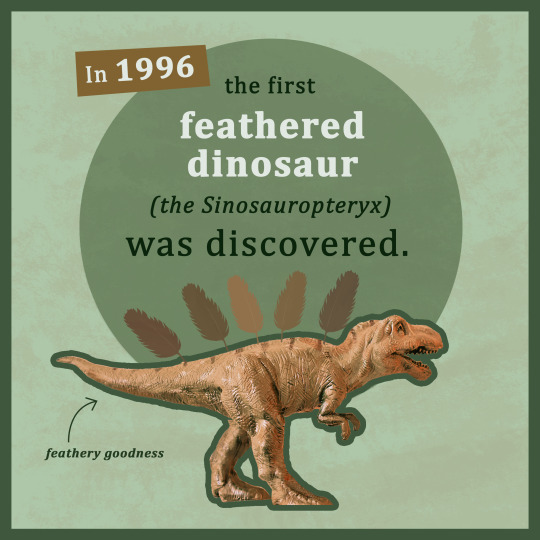


Birds are Dinosaurs!
Birbs.
Birdies.
A little quick piece of explainer content for your fun and education.
#educational content#birds are dinosaurs#dinosaurs#paleontology#prehistoric animals#feathered dinosaurs#cooked illustrations
4 notes
·
View notes
Text
Hello Tumblr! This is Minds and Pens.
Are you a curious person? Do you often wonder what is going on around you? If yes, then behold Minds and Pens!
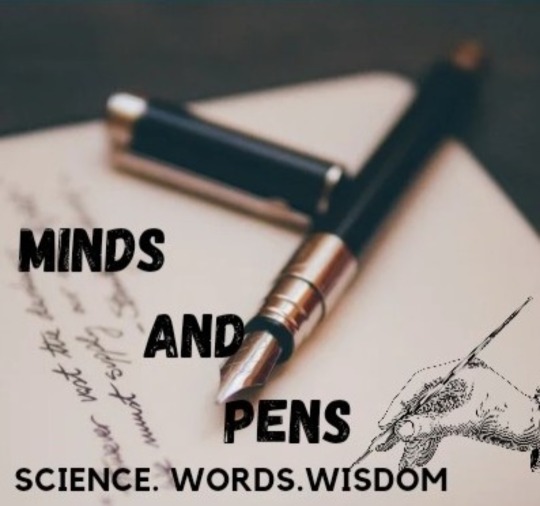
But what is Minds and Pens? Well, to put it simply, it's an initiative with the sole aim of sharing knowledge. We do this by making explainer videos covering a diverse range of topics, making documentaries, writing blogposts, and podcasting. All our posts are created after meticulous research so that they are knowledgeable, satisfy your curiosity, and help you make a better sense of the world around you. All in all, Minds and Pens is an initiative for the curious minds.
The initiative includes a YouTube channel, namely Venture Beyond and a Podcast, namely The Knowledge Nexus and a blog for now. The explainer videos and the documentaries are uploaded on the YouTube channel. For example, two miniseries on Artificial Intelligence and the USA-Iran conflict are currently live on the YouTube Channel. To watch Click here!
The tagine of the initiative is "Science. Words Wisdom". Which effectively conveys the values around which Minds and Pens is built.
Interested much!! Join us on this journey of learning by following our blog on Tumblr. Additionally, you can connect with us on Facebook, Instagram, and 𝕏 by clicking on the links below:
Facebook
Instagram
𝕏 (formerly known as Twitter)
#new blog#Tumblr#educate yourself#curious#curiousity#youtube#science#Words#Wisdom#knowledge sharing#explainer videos#research-driven#podcasting#educational content#learn with us#artificial intelligence#Global Issues#Social Impact
6 notes
·
View notes
Text

Behold the Hillside Comics guide to Anglerfish Sex! I wish I could say I was making some of this up. Let me know if you want more educational cartoons on how your favourite creatures do the deed.
2 notes
·
View notes
Text
youtube
Hey, folks.
I wrote and directed this little explainer video about the effects of habitat loss and fragmentation on frog's mating habits.
It would be a dream if you can share it around a lot more.
Visit our website too, please:
#habitat fragmentation#frogs#tungara frogs#bats#animal behavior#animal mating#animation#educational content#Youtube
2 notes
·
View notes
Text
Can DID form without ‘trauma’? Technically yes. Can DID be endogenic? No.
Confusing title, I know, but bare with me. I’m just trying to clear up some common misunderstandings I see surrounding trauma and DID.
TLDR: The definition of ‘trauma’ within the field of psychology is constantly being explored to determine the best use of it. There is no singular ‘correct’ definition, and it is important to consider the context in which its being spoken about. Within the context of DID, the idea that DID can be ‘non-traumagenic/endogenic’ is inseparable from the idea that it is not real/not a disorder. Even if someone with DID technically does not have ‘trauma’ by certain definitions, that does not mean that the label of ‘non-traumagenic/endogenic’ is appropriate, and labelling it as that has incredibly harmful connotations and perpetuates ableism against DID systems.
(Before we begin, a quick clarification on 2 things.
This post is about DID. DID and OSDD have a lot of overlap, but all of the scientific literature I have ever read has been about DID specifically. Therefore, I say DID here. If anyone has further information surrounding OSDD and would like to open up that dialogue, please do so.
Plural is an opt-in label for people to describe their personal experiences feeling like multiple people. Not every DID system identifies as plural, and not everyone who’s plural has a CDD. I have so much to say about this term PLEASE ASK but this isn’t the post for discoursing about terms. This is just to clarify how I view the term to avoid confusion.)
First, let’s look at the word trauma. There’s a reason I put it in quotation marks and that’s because I am referring to a very specific definition.
The DSM-5 defines a traumatic event as exposure to actual or threatened death, serious injury, or sexual violence.
Yeah, so, a very strict and narrow definition of trauma. This definition does not include things like emotional abuse, neglect (that did not lead to/create concern of serious injury), robbery (that did not include serious violence/threats of serious violence). Even physical abuse that did not lead to or create concern of serious injury does not count as traumatic by this definition.
This means that it is possible for someone to develop DID without experiencing certain definitions of trauma. However, that does not mean endogenic DID exists.
(Note, it can exist I suppose in very specific circumstances of DID systems who were plural endogenically prior to having been exposed to the events that lead to the development of DID, but DID cannot develop endogenically.)
What does endogenic mean? Endogenic, in this context, tends to get summarised as ‘any system that forms for any reason aside from just trauma’. Which, when paired with the DSM definition for trauma, seems to encompass a lot of DID systems.
Except it is important to acknowledge that incredibly narrow definition of trauma is not the right definition. In fact, there is no ‘right’ definition of trauma in the same way there’s no ‘right’ definition of anything. However, in order to get as close as we can to right, its important to understand the context of the conversation being had.
When it comes to DID specifically, its important to recognise the context of what trauma means. Specifically the fact that the idea DID can form without trauma is rooted in things like the sociocognitive model of DID. This model is not saying DID is able to form without trauma, it is saying it’s not a real disorder and people are deluding themselves into believing they have it due to psychotherapy and media. It also says that those with DID who remember trauma are actually experiencing false memories caused by psychotherapy and media.
Pretty fucking ableist!
And the ‘natural multiplicities’ movement (the precursor to non-disordered plurality) was the exact same thing. Theorising that DID is actually a non-traumagenic and non-pathological experience, pushing for the demedicalisation of the disorder. You know, despite the fact that studies indicate it is a trauma response disorder and that, you know, it’s a disorder.
This is why people use ‘endogenic/non-traumagenic’ and ‘non-disordered’ interchangeably when speaking about DID, because it means the same thing in the context of DID. To say DID can be endogenic you’re saying DID can be non-disordered. You’re saying DID is not a disorder.
That’s why there’s such drama and discourse surrounding endogenics, because there’s a lot of really horrific ableism surrounding the idea of endogenic DID that a lot of the wider plural community perpetuates. Even just lumping DID in as inherently plural when plural is not inherently disordered pushes this same idea. That DID is not a disorder, that it’s just this natural thing or that people have been manipulated into believing they have it. It’s why people are so mad, because its perpetuating ableism we’re facing.
Do I agree with anti-endos? No! Because they all seem to further conflate DID and plurality which perpetuates ableism, and also a lot of them are jerks.
And like, look. Me? Personally? Not a big fan of the term traumagenic and I don’t use it to describe our DID. Not because our DID is non-traumagenic, but because it a) opens up the idea that non-traumagenic (and therefore non-disordered) DID exists, but also b) it creates this false understanding of how trauma relates to DID. It’s why we see that multigenic DID BS where people believe ANPs are non-traumagenic alters because they didn’t split from trauma.
DID is not traumagenic in the same way PTSD is. It’s a dissociative disorder that formed as a defence mechanism. I think the term adaptive is more useful in explaining it, but honestly there wouldn’t need to be a term if people stopped conflating the idea of being non-traumagenic with DID.
Even ANPs are adaptive, they’re there because they’re a part of the defence mechanism your brain adapted.
And also adaptive puts more emphasis on the fact that the disorder as opposed to the trauma that caused it. For some systems, uncovering blocked trauma memories and figuring out what caused their DID can be useful. For others, its seriously not. Like us, for example. Our psych has confirmed we show no signs of blocked or hidden memories in childhood, and we’ve figured out our DID probably formed primarily due to a lack of structure (or, as she put it, ‘chaos and discord’) in our life. Which was trauma because it seriously impaired our ability to develop as a child and caused us to have a life long complex dissociative disorder, but also is technically not trauma by things like the DSM definition. But regardless of what definition you use, it’s not appropriate to call it non-traumagenic or endogenic because that is synonymous with not-disordered when it comes to DID.
I swear this was meant to be more put-together than it is, but whatever. I hope this has clarified some shit for some people.
#syscourse#discourse#education#educational content#DID#actuallydid#dissociative identity disorder#long post#Oh boy howdy is this long#DID education#Is it crosstagging to put it in the endogenic DID tags? Is that wrong?#I'm not going to just in case
18 notes
·
View notes
Text
The Guadalupe Fur Seals (Arctocephalus townsendi)
Content: Dead animal discussion and photos below the cut (not gory)
On my very first day, my mentor brought me out to collect a carcass of a guadalupe fur seal yearling! This was super exciting because it's not every day that a collectable carcass shows up, plus I wasn't expecting it to be on my first day. Later that evening, my roommate was out on a walk and found another yearling! This one I called my mentor over for. Super lucky to find two in one day.
Fun Fact! You can tell Northern fur seals and Guadalupe fur seals apart by looking at their fore flippers! Guads have fur that extend down their flipper as seen below:

"Guadalupe fur seal yearlings have a habit of showing up deceased on the northern US pacific coast. What's up with that?"
Great question!
The Guadalupe fur seal (GFS), Arctocephalus townsendi, a threatened species listed under the Endangered Species Act, has had a recent history of increased stranding events along the U.S. west coast, prompting NOAA Fisheries to declare two separate Unusual Mortality Events to investigate the phenomenon. The causes of deaths are generally well-described, with necropsies finding emaciation to be the most common one.
Conservation efforts for the species have led to increases in the population size and re-expansion of range, and a consequent increase in the occurrence of strandings. Additionally, it’s possible that the warming waters may be altering the distribution of prey, presenting foraging challenges for juveniles. Due to needing to learn to survive independently, post-weaning is considered to be a very critical time period for young seals, making the months of May through July the most common time for strandings to occur.
(Written by me)
TLDR; climate change and conservation efforts boosting the population
⚠ full body, non-gory photos of deceased GFSs below

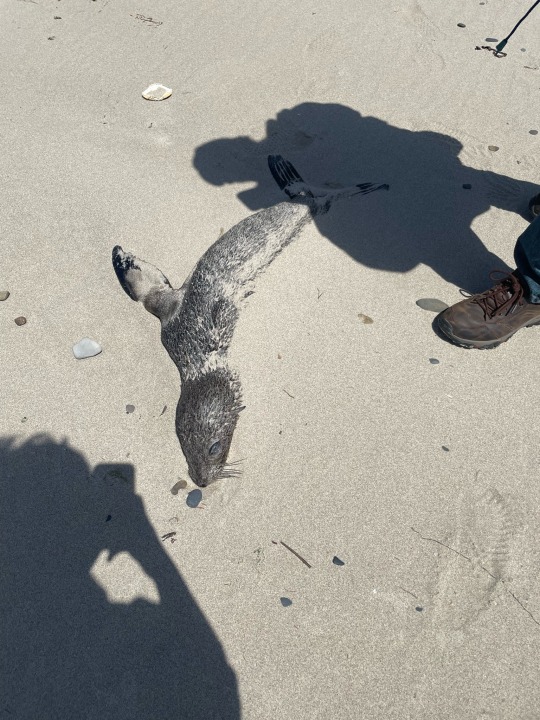
these babies had very very little blubber on them, very emaciated with no stomach contents and one of them had very little blood in its body!
#marine biology#marine mammals#wildlife#zoology#biology#pinnipeds#cw animal death#animal death#deceased#educational content#guadalupe fur seal
3 notes
·
View notes
Note
GET A FUCKING LIFE

Another example is an anon who doesn't have a life but accuses others of not having a life and tells them to get one.
#educational content#😌😌😌#i hope you get the help you need because things are looking really bad for you anon#anon#ask#another shitty anon#or maybe the same one from Sid the sloth's cult
3 notes
·
View notes
Text

youtube
#miniminuteman#science#science tumblr#science side of tumblr#live lecture#lectures#lecture#spreading awareness#current events#social justice#human rights#important#archeology#political#political posting#politics#educational#educational videos#educational content#history#history posting#education#history tumblr#history side of tumblr#youtube#youtube video#youtube videos#youtube content
12 notes
·
View notes
Text
An amazing little personal wiki doodad
Once again trawling itch.io I came across another amazing thing, this time it is a wiki framework called Feather Wiki that loads up and can be edited on your browser, pretty much no more tech skills needed than being able to use tumblr.
Here's a test page that I made copying some content from wikipedia to see how it works. The hyperlinks all lead to wikipedia straight from pasting in, but I could easily change it to my own nested pages.
It took all of 5 minutes to figure out and get up and running. It's super lightweight and fast as well. I'm planning on using it to put down all the accurate info and stuff I come across on the web so I can at least have something to reference back to for when my memory loss gets worse.
My wiki is completely offline and hosted on my desktop. I just click on the shortcut and I can edit, so I do like it a lot, but it can also be hosted on a web server according to the info page.
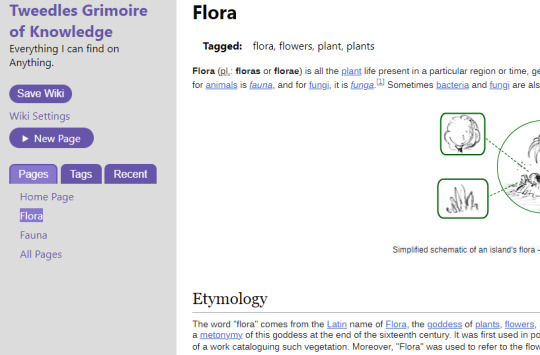
Tbh in an age of disinfo and misinfo, having your own personal wiki where you can log accurate information you find may not be a bad idea. Especially if it's something not only free but simple and easy to run, and useable offline to ensure privacy.
#tweedle's link dumps#tweedle's notebook#tweedle talks#programs#wiki framework#feather wiki#educational content
6 notes
·
View notes
Text
Digital Board For Classroom: Boost Learning and Engagement in 9 Easy Way
In today’s rapidly evolving educational landscape, traditional teaching methods are giving way to innovative tools that enhance engagement and interaction in the classroom. The digital board, also known as an interactive whiteboard or smart board, has emerged as a powerful tool for educators to create dynamic and immersive learning experiences.
● 9 Ways To Use Digital Boards For Classroom
In this comprehensive guide, we’ll delve into the various ways you can harness the potential of a digital board to elevate your teaching methods and engage your students effectively.
1. Getting Started: Familiarising Yourself with the Digital Board
Before delving into interactive lessons, it’s crucial to become familiar with the digital board’s features. Spend time exploring the touch-sensitive surface, understanding how to write and draw using the stylus, and navigating through menus. Most manufacturers provide user manuals and introductory guides to help you get started.
2. Creating Engaging Interactive LessonsThe heart of digital board teaching lies in crafting interactive lessons that captivate your students’ attention. Start by planning your lesson content, incorporating multimedia elements such as images, videos, and animations. Utilize the board’s tools to annotate, highlight, and draw attention to key points. By adding variety to your lessons, you cater to different learning styles and keep students engaged.

3. Utilizing Pre-existing Content and Online Resources
Digital boards offer the advantage of integrating pre-existing content and online resources. Import PowerPoint presentations, PDFs, and educational videos to enhance your lessons. Leverage educational websites, interactive simulations, and online quizzes to reinforce learning objectives. This integration saves time and brings a wealth of educational material to your fingertips.
4. Collaborative Learning: Fostering Student Participation
Engage your students in collaborative learning experiences that foster active participation. Divide your class into groups and assign them tasks that require interaction with the digital board. Whether it’s solving puzzles, brainstorming ideas, or collectively editing a document, collaborative activities promote teamwork, critical thinking, and communication skills.
5. Real-time Assessment and Feedback
One of the remarkable features of digital boards is their ability to conduct real-time assessments and provide instant feedback. Create quizzes, polls, and interactive exercises that gauge your students’ understanding. Review the results together and address any misconceptions immediately. This feedback loop enhances learning outcomes by addressing gaps promptly.

6. Incorporating Virtual Field Trips and Simulations
Take your students on virtual field trips and immersive simulations using the digital board. Explore historical landmarks, venture into the depths of the ocean, or dissect complex scientific processes visually. These experiences transport students beyond the confines of the classroom, making learning more vivid and memorable.
7. Showcasing Problem-Solving and Critical Thinking
Challenge your students’ problem-solving and critical-thinking skills by presenting them with interactive scenarios. Encourage them to analyze data, make predictions, and experiment with different solutions directly on the digital board. This approach cultivates analytical skills and instills a sense of curiosity.
8. Personalization and Differentiation
A digital board allows you to personalize learning experiences to cater to individual student needs. Adjust the pace of lessons, offer additional resources to struggling students, and provide extensions for advanced learners. By tailoring your approach, you create an inclusive environment where every student thrives.

9. Transitioning to Remote Learning
Incorporate the digital board into remote teaching by utilizing video conferencing tools and virtual whiteboard platforms. Share your screen with remote students, use the digital board to explain concepts, and engage in interactive discussions. This flexibility ensures a consistent learning experience, whether students are in the classroom or at home.
Are you looking for a digital board for your classroom?
If you’re in search of a remarkable digital board to transform your classroom experience, look no further than the Studynlearn Interactive Flat Panel. With its impressive features, including 4K Resolution, multi-touch capability, and a 3-year on-site warranty, this panel is a game-changer in interactive learning.
The built-in K-12 smart class content, lag-free writing experience, and versatile dual OS (Windows 11 & Android) make it a versatile and powerful tool for educators. Its interactive whiteboard functionality further enhances engagement and collaboration. The Studynlearn Interactive Flat Panel is the ultimate solution for those seeking to elevate their teaching methods and provide an enriched learning environment for students.
#education#interactive flat panel#learning#smart board#digital board#digital smartboard#e learning#ed tech#educational content
0 notes
Text
0 notes
Text
Friendly reminder that I create education content and analysis of current events from a decolonial, feminist perspective. Please check my channel and any type of support to help my project growing is appreciated! thanks!
0 notes
Text
Given I have seen people say DID is not usually caused by trauma, here is a bit of educational content. If you have any sources that you believe disprove these you are absolutely free to share, but I do request you consider if they actually disprove these things.
There is currently no empirical evidence to support the idea that Dissociative Identity Disorder (DID) can form naturally without any sort of trauma or adverse experience. DID is believed to be a disorder that results from severe and repeated trauma, rather than a naturally occurring phenomenon (American Psychiatric Association [APA], 2013; Nijenhuis, 2014).
Recent studies have provided further support for the trauma model of DID. For example, a study published in 2018 found that individuals with DID reported significantly higher levels of childhood trauma compared to individuals without DID (Brand et al., 2018). Another study published in 2019 found that childhood physical abuse was a significant predictor of the severity of dissociative symptoms in individuals with DID (Borowiecka-Kluza & Domowicz, 2019).
In a recent review of the literature on DID, published in 2020, the authors concluded that "the presence of severe and repeated interpersonal trauma in childhood is the most commonly reported and well-supported etiological factor for DID" (Myrick et al., 2020, p. 114). The authors noted that while some studies have reported cases of DID in the absence of overt trauma, these cases are rare and typically involve some form of neglect or emotional abuse.
In summary, the current scientific evidence supports the trauma model of DID and there is no empirical evidence to suggest that DID can form naturally without any sort of trauma or adverse experience.
References:
American Psychiatric Association. (2013). Diagnostic and statistical manual of mental disorders (5th ed.). Arlington, VA: American Psychiatric Publishing.
Borowiecka-Kluza, J., & Domowicz, K. (2019). The association between childhood trauma and dissociation in adult patients with dissociative identity disorder. Journal of Trauma & Dissociation, 20(4), 492-506. doi:10.1080/15299732.2019.1577442
Brand, B. L., Lanius, R. A., Vermetten, E., Loewenstein, R. J., Spiegel, D., McNally, R. J., ... & Middleton, W. (2018). Where are we going? An update on assessment, treatment, and neurobiological research in dissociative disorders as we move toward the DSM-5. Journal of Trauma & Dissociation, 19(5), 555-573. doi:10.1080/15299732.2018.1464956
Myrick, A. C., Webermann, A. R., Loewenstein, R. J., Lanius, R. A., Putnam, F. W., & Brand, B. L. (2020). Advances in the treatment of dissociative identity disorder: A review of recent research. Current Psychiatry Reports, 22(12), 1-13. doi:10.1007/s11920-020-01177-y
Nijenhuis, E. R. (2014). Dissociation and trauma: An update on the theory. In P. F. Dell & J. A. O'Neil (Eds.), Dissociation and the dissociative disorders: DSM-V and beyond (pp. 107-130). New York, NY: Routledge.
A note of consideration: I used ChatGPT to help me locate the sources and construct the explanation of their contents in an accessible manner. This does not invalidate the actual contents of the study, but I believe it is important for the sake of transparency. You are by all means free to look and see if this summary was a correct portrayal, and I actually encourage you to do so as fact checking is important regardless of the involvement of AI.
10 notes
·
View notes